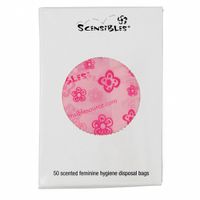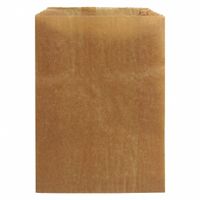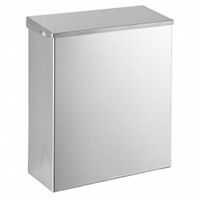Call +(254) 703 030 000 / 751 483 999 / 721 704 777
- Home
- Cleaning And Janitorial
- Waste Recycling Trash Supplies
- Sanitary Napkin Disposal
.....Read More
Frequently Asked Questions
What are sanitary napkin disposal products?
Sanitary napkin disposal products are specialized items designed to facilitate the hygienic and environmentally responsible disposal of used sanitary pads. These products address the challenges associated with the disposal of menstrual waste, which can be both a health hazard and an environmental concern if not managed properly.
1. **Disposal Bags**: These are small, often biodegradable bags that allow users to discreetly and hygienically wrap and dispose of used sanitary napkins. They are designed to contain odors and prevent leakage, making them convenient for use in public restrooms or when a trash bin is not immediately available.
2. **Sanitary Bins**: These are dedicated waste bins found in public and private restrooms, specifically for the disposal of menstrual products. They are often equipped with liners and lids to contain odors and prevent the spread of bacteria. Some sanitary bins are serviced by waste management companies that ensure the contents are disposed of in an environmentally friendly manner.
3. **Incinerators**: These are devices that burn used sanitary napkins at high temperatures, reducing them to ash. Incinerators are often used in institutional settings like schools and hospitals, where large volumes of menstrual waste are generated. They help in reducing the volume of waste and minimizing environmental impact.
4. **Composting Systems**: Some innovative systems are designed to compost biodegradable sanitary napkins. These systems break down the organic components of the napkins, turning them into compost that can be used as a soil conditioner. This method is environmentally friendly but requires the use of compostable sanitary products.
These disposal products are essential for maintaining hygiene, preventing the spread of disease, and reducing the environmental impact of menstrual waste. They provide practical solutions for individuals and institutions to manage menstrual waste responsibly.
How do sanitary napkin disposal products prevent plumbing issues?
Sanitary napkin disposal products are designed to prevent plumbing issues by providing a safe and hygienic way to dispose of menstrual products without flushing them down the toilet. These products typically include disposal bags, bins, and specialized waste systems that address the challenges associated with sanitary waste.
Firstly, disposal bags are often made from biodegradable materials and are designed to securely contain used sanitary napkins. They prevent leakage and odors, making it easy to dispose of the napkins in regular trash bins rather than flushing them. This reduces the risk of blockages in plumbing systems, as sanitary napkins are not designed to break down in water and can easily cause clogs.
Secondly, sanitary bins are strategically placed in restrooms to encourage proper disposal. These bins are often equipped with liners and lids to maintain hygiene and prevent odors. By providing a designated place for disposal, they discourage the flushing of sanitary products, thereby protecting plumbing systems from potential damage.
Additionally, some advanced disposal systems use mechanical or chemical processes to treat sanitary waste, further reducing the risk of plumbing issues. These systems can compact or decompose the waste, making it easier to manage and dispose of without affecting plumbing infrastructure.
Overall, sanitary napkin disposal products play a crucial role in maintaining plumbing integrity by offering convenient and effective alternatives to flushing. They help prevent blockages, reduce maintenance costs, and promote environmental sustainability by encouraging responsible waste management practices.
Where should sanitary napkin receptacles be installed in restrooms?
Sanitary napkin receptacles should be installed in every stall of women's and gender-neutral restrooms to ensure privacy and convenience. They should be mounted at an accessible height, typically between 15 to 48 inches from the floor, to accommodate all users, including those with disabilities. The receptacles should be placed on the wall adjacent to the toilet, within easy reach when seated, to facilitate discreet disposal.
In addition to individual stalls, receptacles should also be available in common areas of the restroom, such as near sinks, to provide options for those who may need to dispose of packaging or other related waste. The design of the receptacles should ensure they are easy to use, with a lid or flap to contain odors and maintain hygiene. They should be made of durable, easy-to-clean materials to withstand frequent use and ensure cleanliness.
Regular maintenance is crucial; receptacles should be emptied and sanitized frequently to prevent overflow and maintain a hygienic environment. Clear signage should be provided to guide users on proper disposal methods, promoting responsible use and maintenance of the facilities.
By considering these factors, restrooms can provide a respectful and accommodating environment for all users, ensuring that sanitary napkin disposal is handled efficiently and discreetly.
What are the benefits of using liners in sanitary napkin receptacles?
Using liners in sanitary napkin receptacles offers several benefits:
1. **Hygiene and Sanitation**: Liners act as a barrier between the waste and the receptacle, reducing the risk of contamination and the spread of bacteria. This helps maintain a cleaner and more sanitary environment in restrooms.
2. **Odor Control**: Liners often come with odor-neutralizing properties, which help in minimizing unpleasant smells. This is particularly important in maintaining a fresh-smelling restroom environment.
3. **Ease of Maintenance**: Liners make it easier for cleaning staff to manage waste. They can quickly remove and replace liners without having to clean the entire receptacle, saving time and effort.
4. **Cost-Effectiveness**: By protecting the receptacle from direct contact with waste, liners can extend the life of the receptacle, reducing the need for frequent replacements and repairs.
5. **Environmental Considerations**: Some liners are made from biodegradable materials, which can be more environmentally friendly compared to traditional waste disposal methods.
6. **User Comfort**: Knowing that a liner is in place can make users feel more comfortable and confident in using the receptacle, as it appears cleaner and more hygienic.
7. **Compliance with Regulations**: In some regions, using liners in sanitary napkin receptacles is a requirement to comply with health and safety regulations, ensuring that facilities meet legal standards.
8. **Prevention of Blockages**: Liners help contain the waste, preventing it from spilling over or causing blockages in the receptacle, which can lead to maintenance issues.
Overall, liners enhance the functionality, cleanliness, and user experience of sanitary napkin receptacles, making them an essential component in restroom management.
How do sanitary napkin disposal bag dispensers work?
Sanitary napkin disposal bag dispensers are designed to provide a convenient and hygienic way to dispose of used sanitary products. These dispensers typically work through a simple mechanical or manual process.
The dispenser is usually mounted on a wall in a restroom, often near the sanitary napkin disposal bin. It contains a roll or stack of disposal bags, which are made from biodegradable or environmentally friendly materials. The bags are designed to be discreet, often opaque, and are sized to fit a single sanitary napkin or tampon.
To use the dispenser, a person typically pulls a lever, presses a button, or simply pulls on the edge of a bag that is protruding from the dispenser. This action releases a single bag, which can then be used to wrap the used sanitary product. The design ensures that only one bag is dispensed at a time, minimizing waste and ensuring that the next bag is ready for the next user.
Once the sanitary product is wrapped in the disposal bag, it can be placed in the designated sanitary waste bin. This process helps contain any odors and prevents the spread of bacteria, maintaining a cleaner and more hygienic restroom environment.
Some advanced dispensers may include features like automatic bag cutting or touchless operation to further enhance hygiene. These dispensers are often found in public restrooms, workplaces, and other facilities where maintaining cleanliness and hygiene is a priority.
Why is it important to provide sanitary napkin disposal options in restrooms?
Providing sanitary napkin disposal options in restrooms is crucial for several reasons. Firstly, it promotes hygiene and cleanliness. Without proper disposal facilities, used sanitary products can lead to unsanitary conditions, unpleasant odors, and potential health hazards. This is particularly important in public restrooms, where high foot traffic can exacerbate these issues.
Secondly, it supports environmental responsibility. Sanitary napkins should not be flushed down toilets as they can cause plumbing blockages and environmental pollution. Proper disposal options, such as dedicated bins, ensure that these products are handled in an environmentally friendly manner, often leading to more sustainable waste management practices.
Thirdly, it respects privacy and dignity. Women and menstruating individuals require discreet and convenient ways to dispose of sanitary products. Providing appropriate disposal options helps maintain their dignity and comfort, reducing the stigma and embarrassment often associated with menstruation.
Moreover, it promotes inclusivity and equality. By ensuring that restrooms are equipped with sanitary disposal facilities, organizations demonstrate their commitment to gender equality and the needs of menstruating individuals. This is particularly important in workplaces, schools, and public spaces, where the lack of such facilities can disproportionately affect women and girls.
Lastly, it aligns with health and safety regulations. Many regions have legal requirements for the provision of sanitary disposal facilities in restrooms. Compliance with these regulations is essential to avoid legal repercussions and to ensure the safety and well-being of restroom users.
In summary, providing sanitary napkin disposal options is essential for maintaining hygiene, supporting environmental sustainability, respecting individual dignity, promoting gender equality, and complying with health and safety standards.
How can sanitary napkin disposal products improve restroom hygiene and cleanliness?
Sanitary napkin disposal products significantly enhance restroom hygiene and cleanliness by providing a dedicated and hygienic solution for the disposal of menstrual waste. These products, such as specialized bins with liners and lids, help contain odors and prevent the spread of bacteria and germs. By offering a discreet and convenient disposal option, they reduce the likelihood of improper disposal, such as flushing sanitary products down toilets, which can lead to plumbing issues and unsanitary conditions.
Moreover, these disposal units often come with antimicrobial coatings or materials that inhibit bacterial growth, further maintaining a hygienic environment. Regularly serviced and emptied by cleaning staff, these bins ensure that waste is managed efficiently, reducing the risk of overflow and contamination. This systematic approach to waste management minimizes the presence of menstrual waste in open areas, thereby maintaining a cleaner and more pleasant restroom experience for all users.
Additionally, the presence of sanitary napkin disposal products can encourage better hygiene practices among restroom users. When individuals have access to proper disposal options, they are more likely to engage in responsible waste management, contributing to the overall cleanliness of the facility. This not only enhances the user experience but also reflects positively on the establishment, whether it be a workplace, public facility, or commercial venue.
In summary, sanitary napkin disposal products play a crucial role in improving restroom hygiene by providing a clean, efficient, and user-friendly solution for menstrual waste disposal, thereby promoting a healthier and more sanitary environment.


